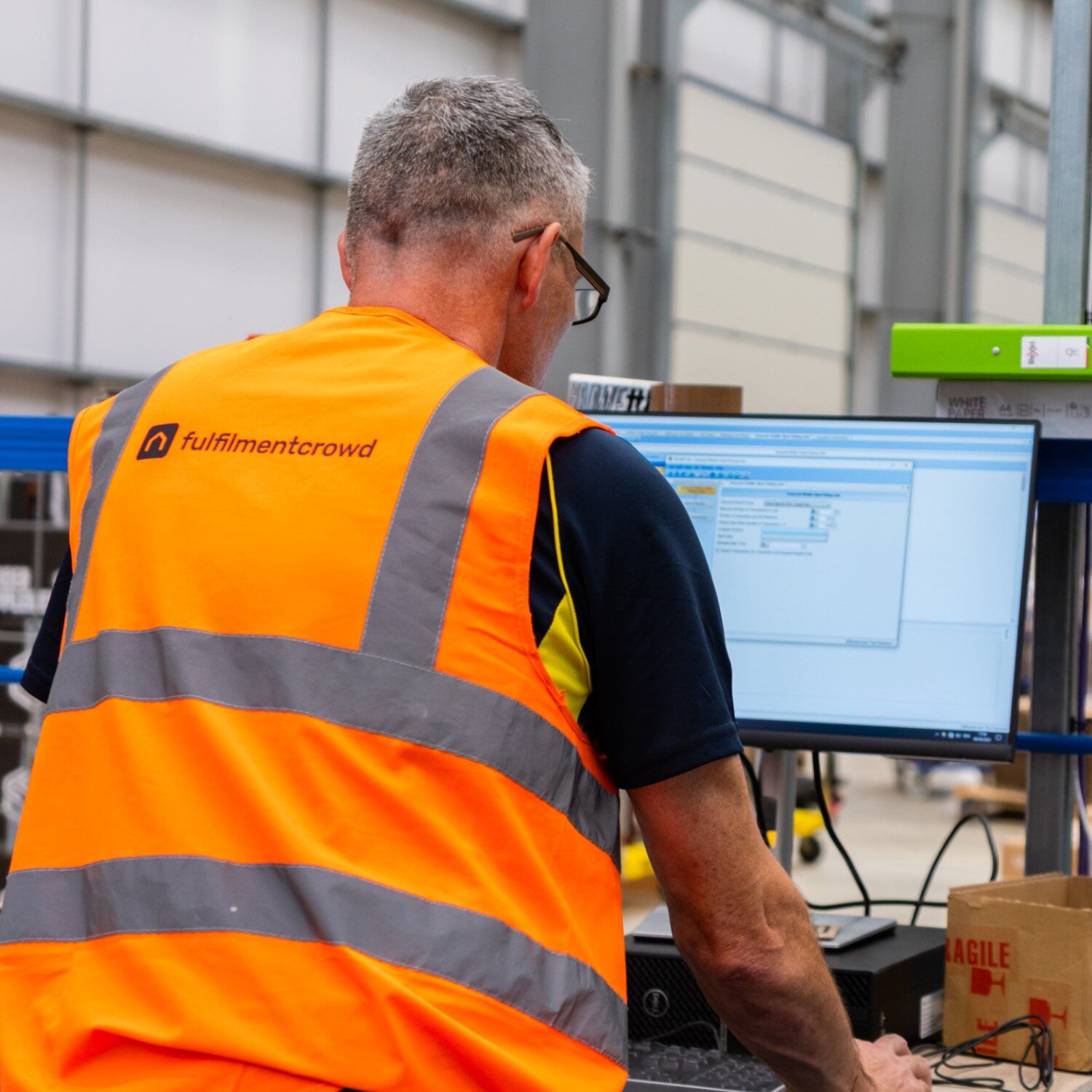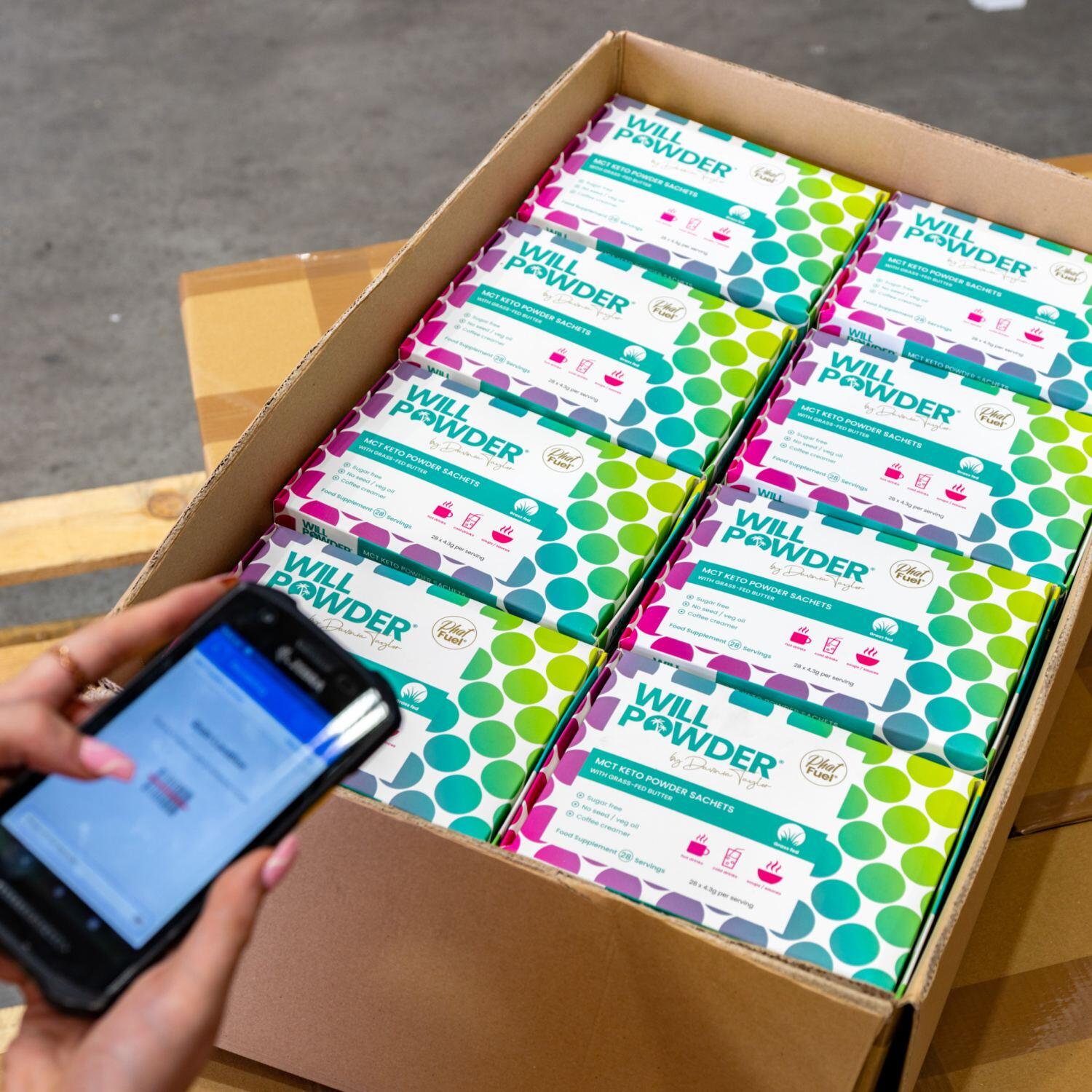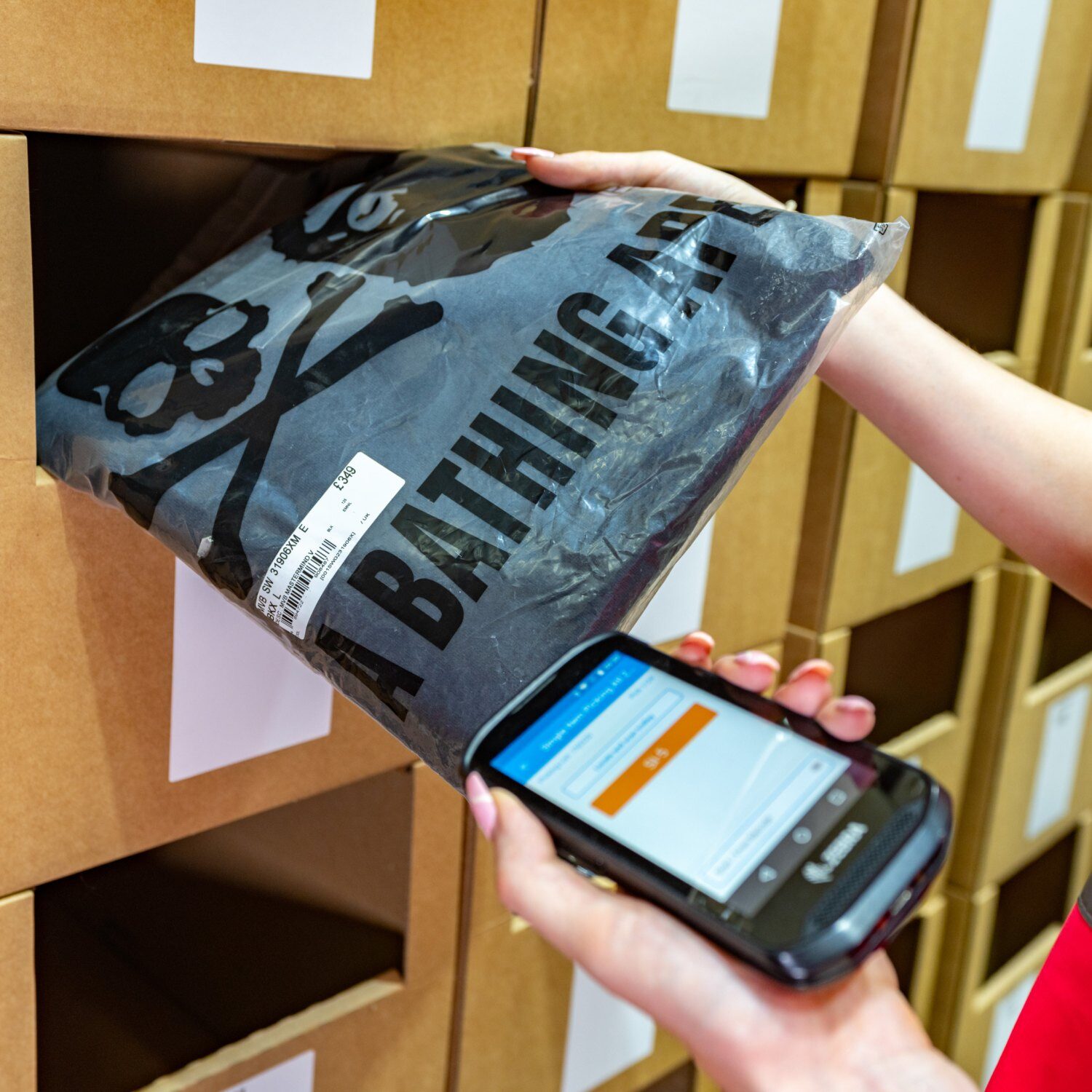Discover how businesses can efficiently manage both B2B and DTC logistics operations seamlessly with a single 3PL logistics provider. Explore strategies, benefits, and best practices.
Leveraging analytics for strategic insights in 3PL management
Audio reader

Download your copy of the OmniDisruptors Report.
Lessons from the brands redefining retails in the omnichannel era.
Download the reportWe know it can be difficult to hear the word ‘analytics’ and not immediately fall asleep. Heck, we saw the title for this blog article and felt a sinking feeling in our stomachs. But for those of you looking to constantly improve and create innovative ways to optimise your operations, enhance decision-making, and stay ahead of competitors - you might just need to pay attention and leverage those analytics to your advantage.
The use of analytics in 3PL management has emerged as a transformative approach, offering strategic insights that drive efficiency and effectiveness. Being data-driven isn’t just a fancy new buzzword - it’s essential to maximise your operations. Below, we’ll outline how analytics can be leveraged in 3PL management, with a focus on optimising operations, enhancing decision-making, and maintaining a competitive edge. We will also explore our very own case studies, including how fulfilmentcrowd utilises analytics to improve our clients' operations.
Optimising operations with analytics
Without operational efficiency, you can kiss resilient 3PL management goodbye. But how do we get there? With data, of course. Analytics provides the tools needed to streamline processes, reduce costs, and enhance overall performance. Here’s how:
1. Demand forecasting
Accurate demand forecasting is crucial for 3PL management. By analysing historical data and current market trends, companies can predict future demand more accurately. This allows for better inventory management, reducing the risk of overstocking or stockouts.
We use analytics to predict client demand. By integrating data from various sources such as sales history, market trends, and promotional calendars, we can provide clients with precise demand forecasts. This has helped reduce excess inventory and improve turnover rates. Not bad, not bad at all.
2. Route optimisation
Transportation is a hefty cost component in logistics. Analytics can help identify the most efficient routes for delivery, taking into account factors like traffic patterns, weather conditions, and fuel costs. This not only saves time and money, but also reduces carbon emissions (and we’re all about the environment at fulfilmentcrowd).
For us, this comes in the form of distributed order management (DOM). This is key when you’re trading across multiple territories or countries with customers all over the world placing orders. The main goals of a DOM system are to optimise inventory, improve order fulfilment efficiency, and enhance the customer experience. Our tech knows what warehouse is the best to despatch the product from based on the location of the delivery address, keeping final mile routes streamlined, delivery times to a minimum and costs as effective as possible. Real-time visibility into inventory levels helps optimise and keep momentum with stockouts and overstock situations, and inventory can be transferred between centres depending on regional sales trends.
3. Warehouse management
When it comes to warehouse management, analytics can optimise warehouse layout, improve inventory accuracy, and enhance picking and packing processes. This leads to faster order fulfilment and reduced labour costs. You might think it’s all down to operations (well, we know they’d like to think that…), but data plays a big part in ensuring you’re not just playing the guessing game.
We use analytics to ensure warehouse operations are as optimised as possible (without upsetting anyone along the way). By tracking key performance indicators (KPIs) such as order picking time, packing efficiency, and inventory accuracy, we can identify areas for improvement. This continuous optimisation has led to faster processing times and higher client satisfaction.
.jpg?width=1068&height=570&name=Pick%20management%20(2).jpg)
Enhancing decision-making with analytics
Analytics empower us to make data-driven decisions that enhance strategic planning and operational execution. We then pass this knowledge on to our clients - giving us the opportunity to look seriously smart and our clients the opportunity to take advantage of some super interesting stats. That’s putting it simply, so here’s exactly how analytics supports better decision-making:
1. Performance monitoring
Real-time performance monitoring allows us to track operations continuously and identify issues before they escalate. This proactive approach ensures that any bottlenecks or inefficiencies are addressed promptly, meaning fewer headaches for you and fewer catastrophes for us.
So how do we do it? We utilise real-time dashboards to monitor key metrics, such as order processing time, delivery performance, and inventory levels. This visibility enables us to quickly identify and rectify any deviations from expected performance, ensuring smooth operations.
2. Customer insights
Understanding customer behaviour and preferences is essential for tailoring services to meet your needs. Analytics can provide deep insights into customer buying patterns, seasonal trends, and product preferences. And that’s just scratching the surface.
We support our clients with peak forecasting, enabling us to be more agile and efficient in managing storage, inventory, and carrier logistics during critical sales periods, particularly October to January. By gearing up for these high-demand seasons, we can handle unexpected surges in orders without compromising our service level agreements (SLAs). The more prepared we are, the better we can ensure smooth operations and exceptional service, no matter the demand. Remember: failing to prepare means preparing to fail - and we’re nothing if not preppers.
3. Cost analysis
Let’s face it, we all need to turn a profit. With shareholders to impress and salaries to pay, cost management is crucial for maintaining profitability within operations. Analytics can help identify cost drivers and areas where efficiencies can be gained, enabling better budgeting and smart financial planning.
We implement a cost analysis tool to break down operational expenses and identify cost-saving opportunities. By analysing transportation costs, labour expenses, and overheads, we can implement measures to reduce costs without compromising service quality.


Smashing the competition with analytics
In order to do everything we’ve outlined above, you need to keep an eye on your competition to ensure they’re not undercutting, overselling, and outsmarting you. Here’s how analytics can provide a competitive edge (and keep you ahead of the game):
1. Market intelligence
Use analytics and big data to your advantage. Stay up-to-date about market trends, competitor activities, and industry developments. This intelligence is crucial for making informed strategic decisions and anticipating market shifts.
2. Innovation and continuous improvement
Continuous improvement is key to staying ahead. Analytics provides the insights needed to innovate and enhance service offerings, ensuring that you can meet evolving customer demands. For us, this looks like regularly analysing operational data and seeking innovative solutions. By experimenting with new technologies and processes, we’re continuously enhancing our service quality and efficiency. This doesn’t just keep us ahead of our competitors, but ensures you stay ahead of yours too.
3. Customer retention and acquisition
Growth. Without it, we stay stagnant, stale, and, frankly, boring. Analytics helps us understand your customer needs better and deliver exceptional service, leading to higher retention rates and new customer acquisition. We identify key drivers of customer satisfaction and loyalty. By focusing on these areas, we help improve customer retention rates and attract new ones.
.webp?width=945&height=504&name=Reports%20section%20of%20platform%20(1).webp)
Putting analytics into action: Our case studies
Ed Hardy: Revitalising a fashion icon in a post-Brexit era
Ed Hardy, a renowned fashion brand, experienced a resurgence through a strategic partnership with fulfilmentcrowd, overcoming post-Brexit challenges. By leveraging fulfilmentcrowd’s expertise in international logistics and data-driven insights, Ed Hardy successfully scaled its operations across the UK and EU. This collaboration led to a 269% year-on-year increase in Direct-to-Consumer (DTC) sales and made European sales account for 20% of the turnover. The use of local distribution centres in Germany and the UK optimised their logistics, reducing costs and improving delivery times. Our analytics provided valuable customer behaviour insights, enabling Ed Hardy to tailor its product offerings to regional preferences and enhance its market position. Read the full case study here.
Lee Kum Kee: Expanding direct-to-consumer channels
Lee Kum Kee (LKK), a Hong Kong-based brand, specialising in Asian foods, partnered with fulfilmentcrowd to launch and grow its direct-to-consumer (DTC) channel in the UK and EU. By integrating with fulfilmentcrowd’s platform, LKK achieved a 180% year-on-year growth in their DTC channel. Our data analytics tools played a crucial role in demand planning and inventory management, ensuring that LKK’s popular gift boxes were always in stock and delivered within 24 hours. This seamless integration and efficient logistics network allowed LKK to extend its market reach, enhance customer satisfaction, and maintain its reputation for quality and reliability.
MeAmora: Beauty at home, packed to perfection
MeAmora, a direct-to-consumer beauty brand, collaborated with fulfilmentcrowd to launch and manage its supply chain operations. Our custom process engineering and integration with MeAmora’s IT systems optimised data flows and enhanced the customer experience. The implementation involved handling over 100,000 units for the initial distribution, ensuring timely deliveries for time-critical events. Our analytics-driven approach enabled MeAmora to manage inventory levels accurately and ensure same-day dispatch of orders. This strategic partnership facilitated MeAmora’s successful launch and ongoing expansion into the EU market, demonstrating the power of data-driven logistics solutions. Read the full case study here.
Curlsmith: Scaling omnichannel success in Europe
Curlsmith, a US-owned haircare brand, achieved significant growth in its European operations by partnering with fulfilmentcrowd. Faced with post-Brexit distribution challenges, Curlsmith leveraged fulfilmentcrowd’s scalable infrastructure and advanced analytics to streamline its supply chain. This collaboration resulted in a 130% year-on-year increase in European sales. By using our integrated platform, Curlsmith gained full control over product inventory and order management, enabling efficient B2B and DTC operations. The strategic placement of stock in European centres allowed Curlsmith to meet market demands promptly and maintain high service levels, driving brand recognition and profitability. Read the full case study here.
Jollyes: Optimising logistics for a leading pet food retailer
Jollyes, one of the largest pet food retailers in the UK, partnered with fulfilmentcrowd to enhance its eCommerce logistics. fulfilmentcrowd developed a just-in-time replenishment process, optimising storage and stock turn rates for Jollyes’ broad product range. By integrating with Jollyes’ ERP and Magento website, fulfilmentcrowd ensured real-time stock availability and efficient order processing. This data-driven approach led to a 34% increase in annual sales and improved operational efficiency, showcasing the impact of analytics in managing complex logistics operations.


Final thoughts
Leveraging analytics for strategic insights in 3PL management is no longer a luxury, but an absolute necessity. From competition to cost centres, everything is driven by data - knowing how to use it is the essential part. By optimising operations, enhancing decision-making, and staying ahead of competitors, we’re able to deliver exceptional value to our clients. Our success stories highlight the transformative potential of analytics in 3PL management, showcasing how data-driven approaches lead to operational excellence and customer satisfaction.
As the logistics industry continues to evolve, the integration of advanced analytics will become even more critical. As always, we’re going to continue embracing this transformation (and leading the curve when it comes to technology), leaving us well-positioned to navigate the complexities of the market, drive innovation, and achieve sustained success for our clients. Whether through demand forecasting, route optimisation, warehouse management, or customer insights, the strategic use of analytics is key for efficiency - and beyond.
Looking for more industry insights?
Check out our other recommendations just for you!
See allDiscover how Ed Hardy have thrived on a global scale when presented with challenges such as the aftermath of Brexit.
What are 3PL logistics? Discover more about third party logistics and how this relates to order fulfilment processes.


.jpg?width=300&name=Dublin-warehouse%20(1).jpg)
.webp?width=300&name=Omnidistruptors-mockup1%204%20(1).webp)
.jpg?width=300&name=GAAstore-lifestyle-image%20(2).jpg)

 By Lee Thompson
By Lee Thompson




